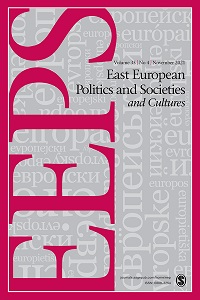The Elites of Solidarity: Prosopography of Delegates for the First National Congress of Solidarity
The Elites of Solidarity: Prosopography of Delegates for the First National Congress of Solidarity
Author(s): Piotr OsękaSubject(s): Political history, Social history, Labor relations, Government/Political systems, Politics and society, Post-War period (1950 - 1989), History of Communism, Politics of History/Memory
Published by: SAGE Publications Ltd
Keywords: Solidarity; Elites; Communism; prosopography; 1989;
Summary/Abstract: The article aims at contributing to the social history of the Solidarity movement by tracing the collective biography of its elected representatives. It will focus on the life trajectories of the 900 delegates to the First National Congress of Delegates. The convention, held in Autumn 1981, is commonly perceived as a focal moment in the history of Solidarity and plays a crucial role in almost every academic narrative on the anticommunist opposition. Often seen as a first genuine Polish parliament since pre-war times, its main task was to forge the political and economic programme thus furthering the revolution. The projected research will draw on genuine methodology, combining prosopographical and oral history approach. The research will address mainly the following issues: what social strata the elites came from, what was their cultural and educational background, what motives/causes/expectations drove them to engage with Solidarity, to what generations did they belong, how did they embrace the character of political transformation of 1989, and to what extent and how did they get involved in the political, economic, and social life of post-communist Poland. In general, the paper seeks to shed a new light on our understanding of Solidarity’s social roots—for instead examining to what extent the contesting, revolutionary elites were a product of the Stalinist social advancement. It also tries to depict the level of continuity between the elites of 1981 and post-1989—thus testing the common theories whether the Third Republic is (or is not) rooted in the legacy of Solidarity.
Journal: East European Politics and Societies
- Issue Year: 35/2021
- Issue No: 04
- Page Range: 1195-1216
- Page Count: 22
- Language: English
- Content File-PDF

